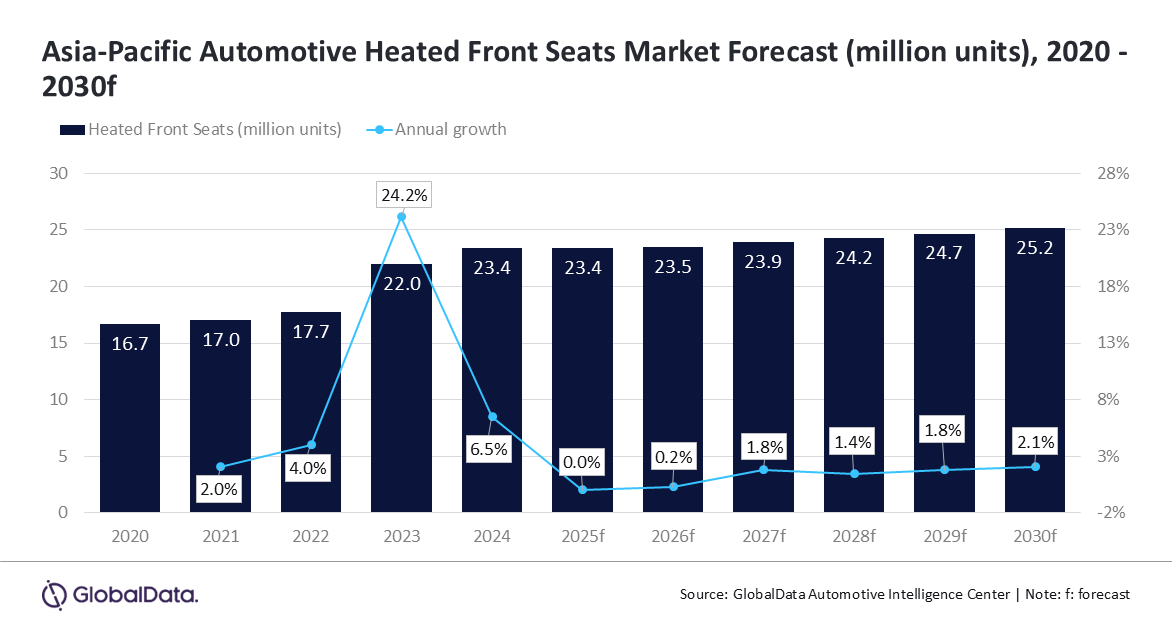Innovation / Fleet
2025 Toyota 4Runner TRD Sport: balancing modernity and tradition
APAC automotive heated front seats market to record 1.5% CAGR over 2025-30, forecasts GlobalData

The Asia-Pacific (APAC) automotive market is entering a new phase in which comfort-centric content becoming an expectation rather than an option. As overall vehicle demand in APAC advances—led by scale in China, steady momentum in Japan, and faster expansion in India—heated front seats are emerging as a meaningful differentiator across segments with lifestyle appeal and practical benefits. The technology is expected to play a significant role in shaping future model strategies across the region. Against this backdrop, the APAC automotive heated front seats market is forecast to record a compound annual growth rate (CAGR) of 1.5% over 2025-30, according to GlobalData, a leading data and analytics company.
GlobalData’s latest report, “Global Sector Overview & Forecast: Automotive Seating Q3 2025,” reveals that the APAC heated front seats market is poised to grow from an estimated volume of 23.4 million units in 2025 to 25.2 million units in 2030.

Madhuchhanda Palit, Automotive Analyst at GlobalData, comments: “In APAC, consumer preferences are steadily tilting toward elevated in-cabin comfort and luxury. Heated front seats address this desire directly, offering a tangible improvement to daily driving, especially in colder climates across parts of the region. Beyond comfort, the soothing warmth can help ease back discomfort on long commutes. APAC buyers increasingly expect personalization that include adjustable temperature settings, multiple heating levels, and seamless integration with broader vehicle systems. This push toward customizable, connected comfort experiences is reinforcing the adoption of heated front seats across mainstream and premium nameplates in the region.”
APAC’s growing interest in electric vehicles (EVs) adds further momentum. Because heated front seats provide localized warmth, they support cabin comfort while using energy more efficiently than traditional full-cabin heating. This characteristic is especially relevant to EV users in APAC who are attentive to range preservation and charging convenience.
Innovations such as Gentherm’s CCS Heat—leveraging power boost and zonal heating to reach target temperatures rapidly with reduced energy draw—align well with EV priorities in the region. As more APAC consumers transition to electrified platforms, the practicality and efficiency of heated front seats are likely to influence purchase decisions and trim-level mix.
Palit concludes: “As China’s scale, Japan’s steady trajectory, and India’s accelerating demand shape regional vehicle mix, heated front seats will likely move further into the mainstream—particularly within EVs and higher-content trims. While future outcomes will depend on consumer affordability, model availability, and broader market conditions, advanced seat heating solutions are set to become a core lever of product differentiation, customer satisfaction, and value creation for both OEMs and suppliers in APAC.”

L'Automobile Magazine
News
Business Directory



 En
En  Fr
Fr 


